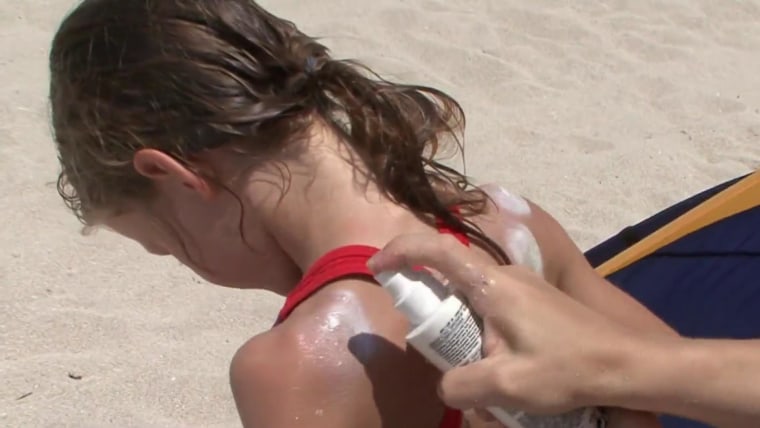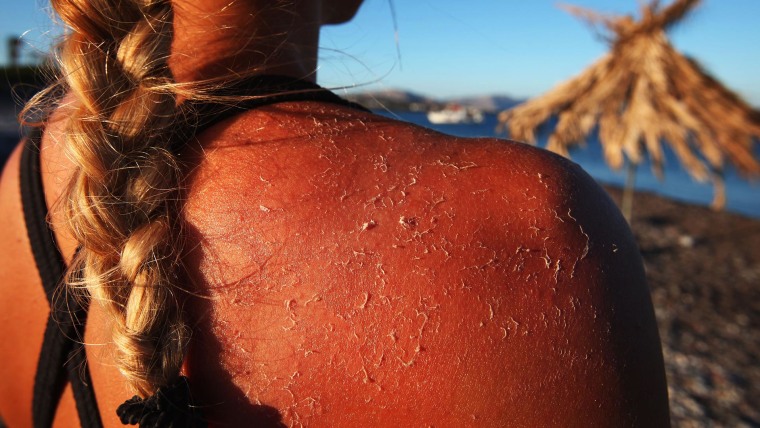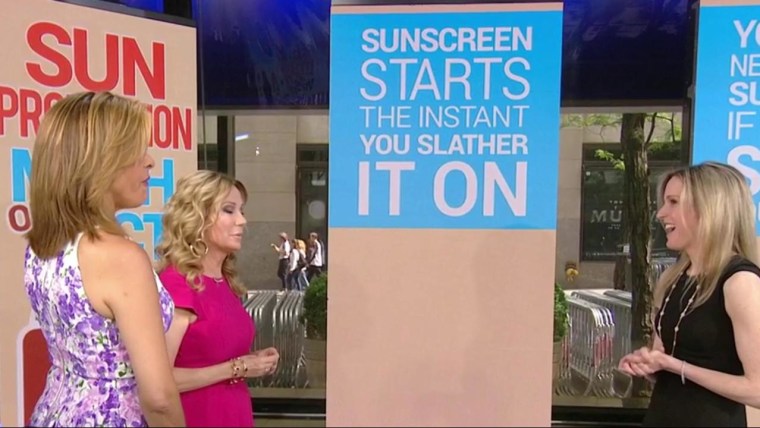How Much Vitamin D Is Safe In Pregnancy
Just as many people won't leave home without applying sunscreen, others actively shun it over worries about what's in the bottle.
Ingredients that protect skin from ultraviolet rays have raised concerns about their impact on human health and the environment. Some fear the chemicals are getting into the body and could disrupt the hormone system, affecting how reproductive and thyroid hormones act. Then, there's uneasiness about people not getting enough vitamin D.
Some communities are also banning certain sunscreens that could be harmful to coral reefs.

So what's a person to do?
Medical societies are clear: Keep wearing sunscreen.
Claims that sunscreen ingredients are toxic or a hazard to human health have not been proven, the American Academy of Dermatology noted.
The potential risk of not using sunscreen far outweighs the risks of using it, advised Dr. Len Lichtenfeld, deputy chief medical officer of the American Cancer Society.
But concern about the products continues to come up when dermatologist Dr. Adam Friedman sees patients, so he said his approach is to focus on the facts.
"The fact is ultraviolet radiation causes skin cancer. There's no disputing this… everybody should be using sunscreen from a skin cancer perspective," Friedman, professor and interim chair of dermatology at the George Washington School of Medicine and Health Sciences, told TODAY.
"The safety issues that have been raised are mostly based on cell line data and animal data, not actually human data. Personally, I'm offended if I'm compared to a cell itself, because there's a very big gap between going from a petri dish to the human system."

There are two types of sunscreen:
- chemical — which absorbs into the skin and then absorbs the sun's rays.
- physical or mineral — which sits on top of the skin and deflects the sun's rays.
In February, the Food and Drug Administration said the two main active ingredients used in mineral formulations — zinc oxide and titanium dioxide — should be declared as "generally recognized as safe and effective" for use in sunscreens.
It also asked the industry for additional information about 12 other active sunscreen ingredients currently available in the U.S. — including those widely-used in chemical formulations such as oxybenzone and avobenzone. The agency said it needed more safety data before it could declare them "generally recognized as safe and effective."
"This request for additional data does not mean that the FDA has concluded that these 12 ingredients are unsafe," Dr. Theresa Michele, director of the FDA's division of nonprescription drug products, told Consumer Reports. "The goal here is to get the data and validate the safety and effectiveness of all these ingredients."
The agency also proposed declaring two ingredients — PABA and trolamine salicylate — as not meeting the "safe and effective standard" because of safety issues.
The Environmental Working Group, a non-profit watchdog that's been warning about sunscreen chemicals, called the FDA's proposals "a big step toward cleaning up a largely unregulated industry."
What to know about sunscreen chemicals:
EWG has been particularly concerned about oxybenzone, recommending that people avoid formulations with this active ingredient. That may be hard to do since almost two-thirds of non-mineral sunscreens contain the chemical, according to the group's database. Oxybenzone has been detected in much of the U.S. population and in breast milk, EWG warns.
The American Academy of Pediatrics advises parents that they "may want to" choose a sunscreen without oxybenzone because the ingredient may have hormonal properties.

Friedman noted that has never been proven in humans. Rats that were fed oxybenzone showed changes in uterine size, but a 2011 study found that to get the equivalent levels the animals were exposed to, a woman would have to apply sunscreen every day to a quarter of her body for 277 years.
"A lot of these concerns, while I'm not trying to discount them, in order to say this is real, you need scientific evidence and we just don't have that," Friedman said. "Let's say you measure some oxybenzone in blood, breast milk and urine — how does that translate to actual disease? That's the part that's missing. Just because it's there doesn't mean that amount has any negative consequences."
What to know about getting enough vitamin D:
The body needs vitamin D and can manufacture it when the skin is exposed to the sun. So there's concern products that block the sun's rays are interfering with an important health mechanism.
Still, Friedman advised against intentionally going out into the sun even briefly without sunscreen, noting it takes minutes of unprotected sun exposure between 10 a.m. to 4 p.m. to elicit damage to cellular DNA, which could lead to skin cancer.
"If you had someone put vitamin C in a cigarette, would you smoke to get your vitamin C?" he asked, citing his favorite analogy. "It's just not worth the risk."
It's better to get vitamin D from dietary sources, Friedman advised.

What to know about environmental damage:
In February, Key West officials banned the sale of sunscreens with oxybenzone and octinoxate after researchers said the chemicals can harm coral reefs. The industry fought the ban, noting more studies were needed to prove the link.
Hawaii passed a similar law last year. Both bans go into effect on Jan. 1, 2021.
There's no question sunscreens are getting into the water, but Friedman wondered whether that translates to having a biological effect.
"In labs, it's been shown that these ingredients can bleach coral," he said. "But the amounts used in the lab are much, much, much higher than what's actually out there in the real world. And it doesn't account for all the other horrible things going on in our environment that could be bleaching the coral."
Bottom line:
Use sunscreen, Friedman said. The best type is the one you'll use again and again, according to the American Academy of Dermatology.
Just make sure it offers broad-spectrum (UVA and UVB) protection, has an SPF of 30 or higher and is water-resistant. Friedman recommended sunscreens that use both chemical and mineral blockers for the best protection.
How Much Vitamin D Is Safe In Pregnancy
Source: https://www.today.com/health/sunscreen-safe-what-know-about-ingredients-impact-vitamin-d-t151886

0 komentar:
Posting Komentar